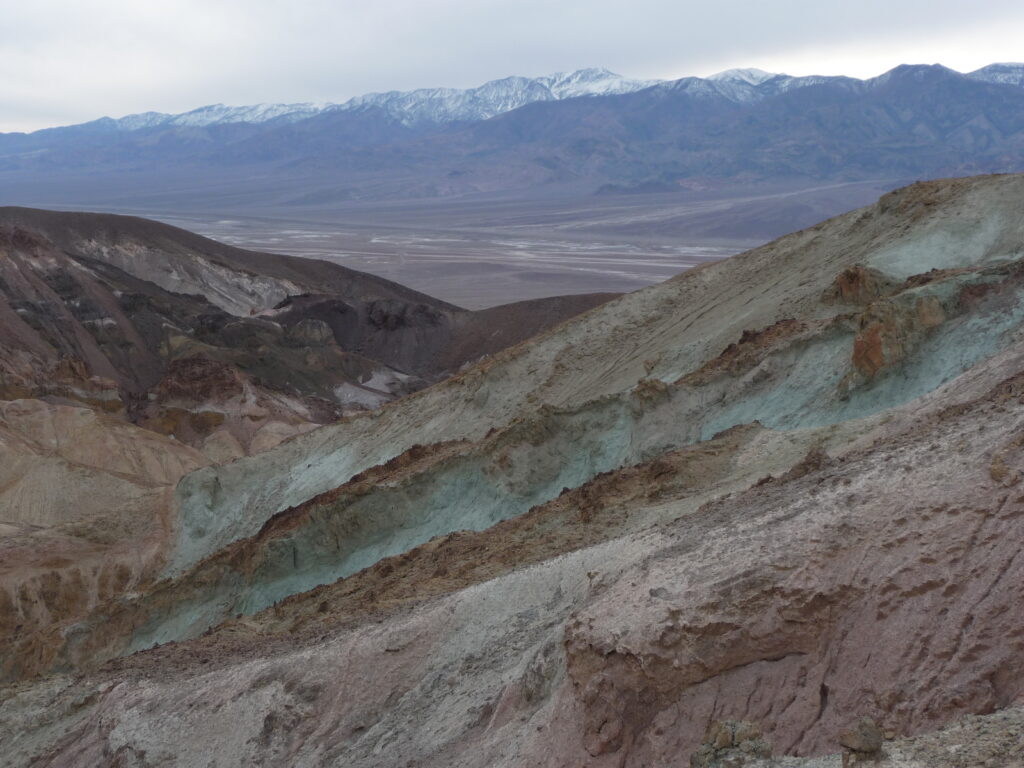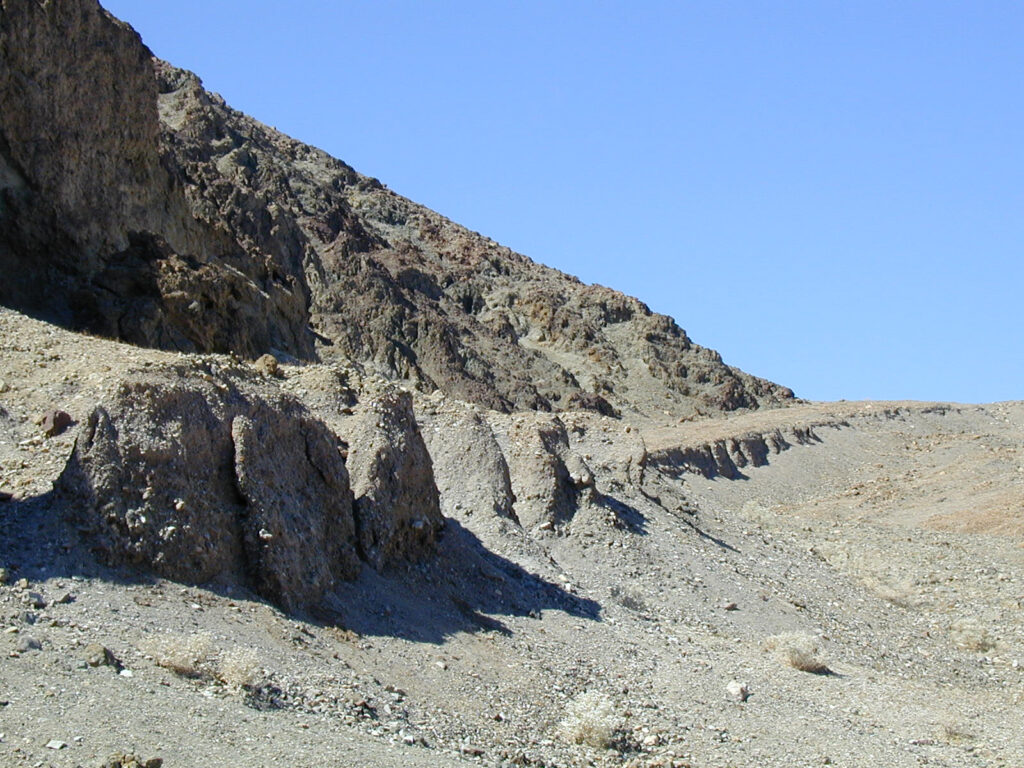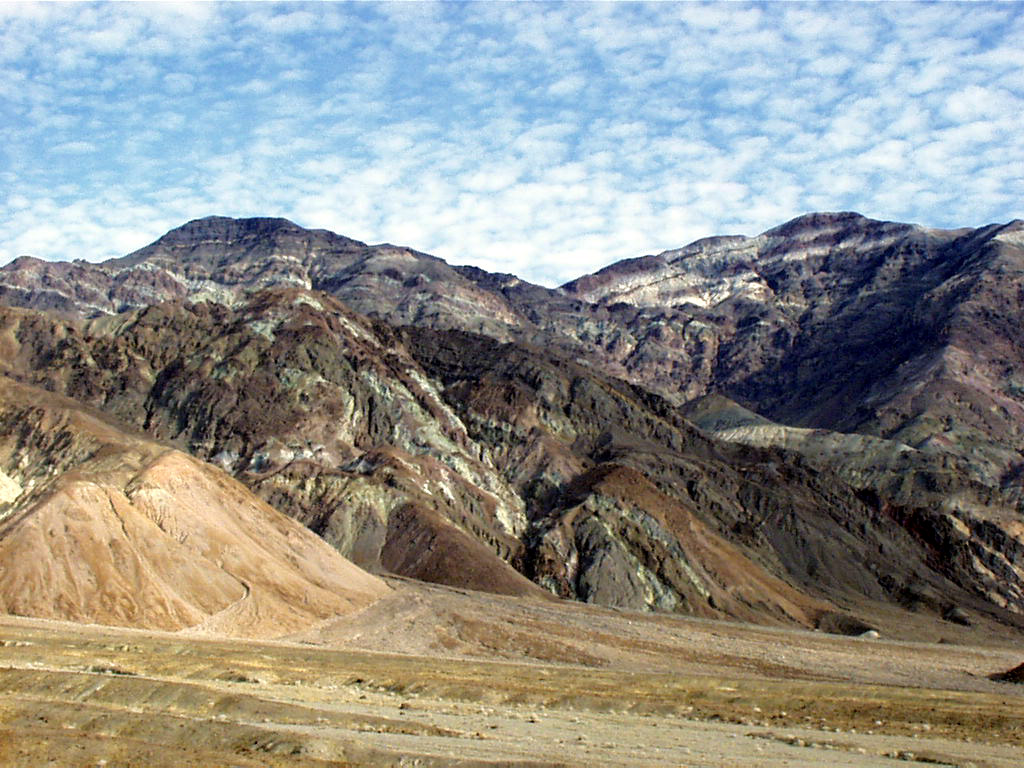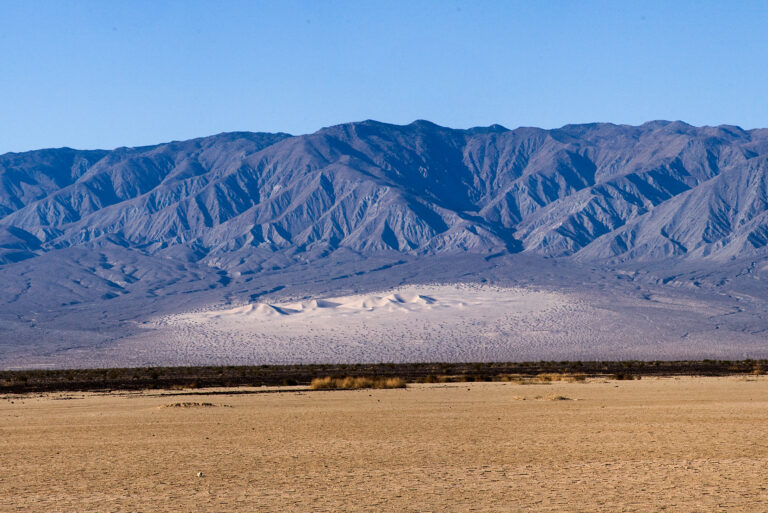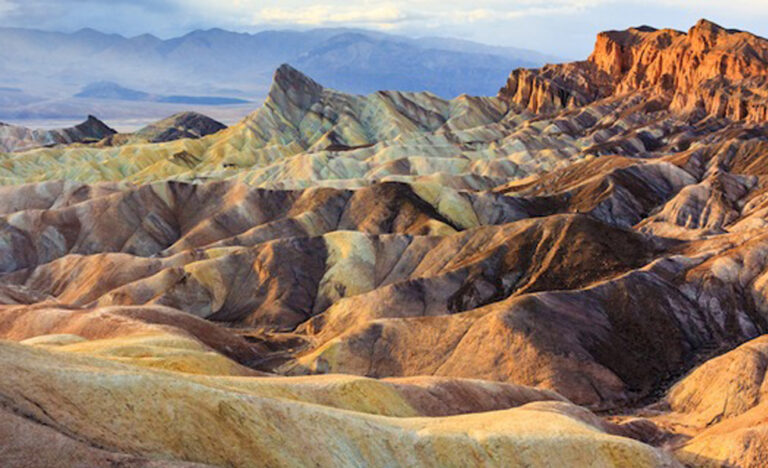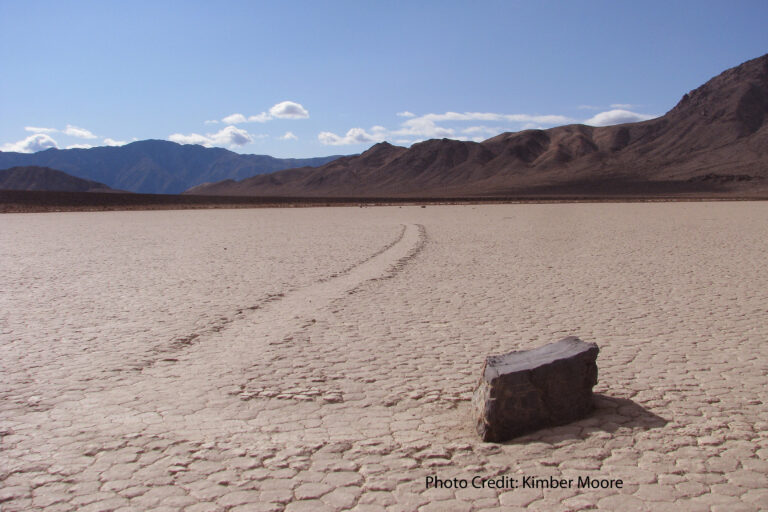Geology is the scientific study of the Earth’s solid materials, including rocks, minerals, and soils, as well as the processes that shape and transform them over time. This field of study encompasses the investigation of Earth’s structure, composition, and history, and it seeks to understand the physical and chemical processes that have occurred throughout the planet’s 4.6-billion-year existence.
Death Valley National Park’s geology is intricate and diverse, showcasing a captivating history that extends over millions of years. This unique region boasts an array of geological features, including striking mountains, deep canyons, and expansive deserts shaped by the forces of plate tectonics, erosion, and mineral deposition.
Death Valley lies at the intersection of several major fault systems, such as the San Andreas Fault, where the Pacific and North American plates interact. This tectonic activity has caused the land to rise and fall over millions of years, resulting in earthquakes and the formation of mountain ranges like the Panamint Range, the Black Mountains, and the Funeral Mountains. Composed of various rock types, including granite, gneiss, schist, and limestone, these mountains exhibit steep, rugged terrain with deep canyons and sharp peaks.
The region’s valleys are products of complex interactions between tectonic and erosional forces. Spanning 140 miles (225 km) and bordered by the Panamint Range to the west and the Black Mountains to the east, Death Valley is one of the lowest and driest places on Earth. Its floor consists of sedimentary and volcanic rocks.
The park also features playas, flat desert basins with cracked, dried mud surfaces such as Racetrack Playa. These striking landscapes result from erosion and sediment deposition. Erosion has significantly influenced the park’s geology, with wind and water carving deep canyons and gullies that expose rock layers and unveil the area’s geological past. Zabriskie Point, known for its vivid, multicolored rock layers, exemplifies this erosive process.
Mineral deposits, including borax, talc, and gypsum, have played a vital role in the region’s economic history through the mining industry. Additionally, Death Valley hosts various hot springs and geothermal features, indicative of the area’s active geology.
Death Valley National Park presents an incredibly diverse and intricate geological landscape with a rich history spanning millions of years. This captivating area continues to provide valuable insights into Earth’s geological processes and evolution.

